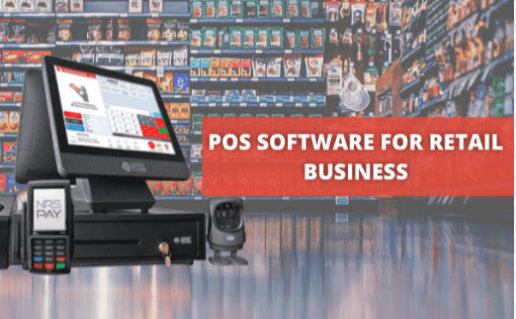Streamline Your Repair Business: Top Features of POS Software

The key to success in the repair industry is efficiency. To manage processes, one must use technology rather than rely on manual methods and techniques. However, it can be challenging for business owners to find a reliable and efficient automation tool for repair shops.
Below, we will let you know what features to look for in shop POS software. Along with that, you will learn how such a system can help streamline your repair business’s operations.
Introduction to POS Software for Repair Shops
Point-of-sale software is used everywhere. Restaurants, retail shops, auto and electronic repair shops, etc., get help from this system to organize their processes. From payments to cash flow to employees, it can help repair guys with every aspect of their business.
Efficient Repair Management
First things first, POS software for repair shops helps a lot in managing the jobs. You can create repair tickets before beginning to fix the device. Other features of the module can include.
- Repair Tickets: Create detailed tickets for the products and gadgets that come to your repair shop. The software allows you to create detailed repair tickets. In this, you can include all the information of the customer. For instance, you can add the issue with their phone or computer, estimated repair time, etc. So you can ensure every repair job is documented.
- Repair Status Tracking: Choosing the right shop POS software can help you a lot in every aspect. Once you accept the repair job, you can create a ticket against it. After that, you can assign that to any of your repair technicians. This way, you can track it whenever needed and let your customer know about the time required to complete it.
- Workflow Management: You can assign a job from one technician to another, depending upon the complexity of the task and available time. Along with that, you can monitor their progress, helping you to optimize the workload.
Without a doubt, inventory management is a challenging task. Specifically, during summer break and the holiday season, a repair shop owner can face inventory shortage. The reason is the increase in demand for repair services. People get some free time to get their gadgets fixed. So, they look for reliable service providers.
Inventory Management
Therefore, you must equip your repair lab with a POS system. Through a notification feature, it will let you know whenever you are running out of stock. This way, you never miss a sales opportunity and can serve every customer right.
- Real-Time Tracking: POS software offers real-time tracking of inventory levels. This ensures you can always stay on top of your inventory.
- Automated Reordering: You can set minimum inventory levels for important parts and accessories. You can set automatic alerts so you would know when it’s time to reorder. Similarly, you can order parts from your desired vendors and suppliers. So you won’t have to look for parts providers every time.
Customer Relationship Management
Maintaining strong relationships with customers is essential. and with POS software, you can offer great customer service.
- Customer Database: POS software allows you to maintain a comprehensive database of customer information.
- Better Communication: You can communicate with the customers in real-time. You can get back to them on time if they have any questions. For instance, they can ask for repair status updates so they know when to revisit the shop.
Along with these features, you must also look for how to pick the right POS system for your repair shop.
Employee Management
Managing all your employees and repair technicians is important. In other words, your employees are your assets. We suggest you pick the right candidate who can repair all types of phones and computer systems. By equipping POS software for a repair shop, you get
- Scheduling and Time Tracking: Get a bird’s eye view of your employee’s progress. POS software will let you know their check-in and check-out times so you can see how many hours each of them has worked.
- Performance Monitoring: You can track employee performance, including the number of repairs completed. Also, you will get to know the sales generated, helping you calculate and process their payrolls.
You must also look for effective strategies to manage people at work. This will help you manage your employees more efficiently.
Read more Important Considerations for Efficient Pest Control Administration
Payments
POS software helps you get the payments from your customers on time. You can collect contactless payments using RFID. Along with that, as a business owner, you can send a payment link to your clients through email.
- Partial Payments: You can offer customers the option to clear the dues partially.
- Deposits: POS software helps you collect deposits before you start working on the repairs.
Final Words
Investing in the right POS software can help you streamline your repair shop. For most business owners, the challenging parts of running a repair lab include inventory, employees, and cash flow management. And the right POS software will help you streamline all these operations.
So, whenever you think of equipping your shop with a POS system, ensure it has all these features. This way, you can boost your sales and customer base and create a huge brand in the repair industry.




